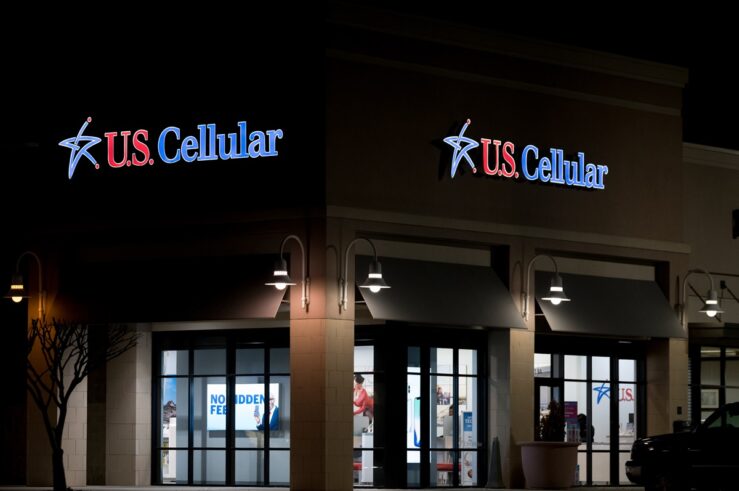
Congress intended the Infrastructure Investment and Jobs Act’s (IIJA) ambitious $42.5 billion Broadband Equity, Access, and Deployment (BEAD) program to bridge America’s digital divide by subsidizing infrastructure buildout to areas that are either unserved or underserved by broadband internet. With projects administered by the 50 states, five insular territories, and the District of Columbia, the program was never going to be a “quick fix.”
Even so, the National Telecommunications and Information Administration (NTIA) has been criticized for the seemingly glacial pace of the program’s rollout. Federal Communications Commissioner (FCC) Brendan Carr has been one of the most vocal critics, with near-daily posts on X.com (the website formerly known as Twitter) knocking how the Biden administration has run the program.
In 2021, @VP Kamala Harris agreed to lead the Administration’s $42B plan to extend Internet to millions of Americans, stating then "we can bring broadband to rural America today."
Today, 1?,0?2?9? days after it was enacted:
0? People have been connected
0? Projects underway
— Brendan Carr (@BrendanCarrFCC) September 9, 2024
He’s not the only one. The U.S. House Energy and Commerce Committee just convened a Sept. 10 hearing in which several members and witnesses detailed problems with the program’s rollout. As outlined in the hearing memo, among the reasons for the BEAD program’s sluggish rollout have been attempted rate regulation and issues with permitting, financing, labor, and “Build America” requirements.
But one of the biggest complaints, especially from rural and mountain states, has been the NTIA’s “fiber-above-all” approach, which serves to disfavor non-fiber technologies like low-earth-orbit (LEO) satellites and unlicensed 5G fixed-wireless broadband.
Being that this is an election year, the growing and vocal criticism appears to have rendered the NTIA higher-ups a bit squirrelly. Apparently that’s why, at the end of August, NTIA asked for comments on “proposed guidance” regarding these so-called “alternative broadband technologies.” Moreover, the agency seems to be in a bit of a rush, as it allowed only 16 days to submit comments.
You can find the comments that we at the International Center for Law & Economics (ICLE) submitted here. Put simply, BEAD can only reach its goal of connecting all unserved and underserved populations with the money the IIJA allocated by including unlicensed fixed wireless and LEO satellite broadband. This reality underscores why the NTIA should adopt a technology-neutral approach in guidance in order to facilitate state projects that include those providers in their plans.
The NTIA’s existing guidance proposes a three-tier system. The top priority is for fiber-optic projects, followed by other “reliable” broadband services, and lastly, “alternative technologies” like fixed wireless or LEO satellite services. These alternative technologies are only to be considered if the cost of other options is exceedingly high. Before funding new projects, states must check if there are already plans to deploy alternative technologies or if existing providers can meet the program’s requirements.
For satellite internet, while the NTIA would allow funding to reserve network capacity, the guidance applies extra conditions like a 10-year performance period and suggests only reimbursing providers for their number of actual subscribers, which is different from how providers of other broadband technologies are treated.
In our comments, we conclude that the NTIA’s proposed guidance risks undermining BEAD’s objectives by inherently favoring fiber-optic technology over what are potentially more cost-effective alternatives. While fiber certainly offers high-speed and reliable connectivity, it’s not a one-size-fits-all solution. Laying fiber can be prohibitively expensive in many rural and remote areas. In those challenging terrains, alternative technologies like fixed wireless and LEO satellite services could offer faster, more affordable solutions. The NTIA’s hierarchy of funding fiber first, other “reliable” technologies next, and LEO and fixed wireless technologies last fails to recognize both these diverse community needs and the recent rapid advancements in alternative technologies.
Consider the case of Starlink, SpaceX’s LEO satellite-internet service. In just five years, it has gone from the concept stage to providing broadband speeds of up to 220 Mbps to even the most remote locations in the United States. Similarly, 5G fixed wireless has grown in the six years since its initial rollout to now comprise 6% of U.S. internet connections, with speeds nearly tripling since its 2018 launch.
These developments underscore a crucial point: technology-neutral policies can foster innovation and competition. By allowing different solutions to compete on their merits, we drive providers to improve their offerings, leading to better service and lower prices for consumers.
Moreover, the cost structures and performance characteristics of different broadband technologies vary in ways that may make them more or less suitable for different geographies and demographics. Fiber might be the most cost-effective choice in densely populated areas, while LEO satellites could be more efficient in remote and sparsely populated regions.
The NTIA’s proposed guidance, however, places onerous requirements on alternative technologies. For instance, it demands that LEO satellite providers demonstrate a network capacity of at least 5 Mbps or 2 TBs of monthly usage per broadband-serviceable location. This requirement fails to account for satellite networks’ shared-capacity model and could lead to inefficient overprovisioning (i.e., allocating more resources than a network currently needs).
Furthermore, the proposed reimbursement structure for LEO satellite providers, which is based solely on actual subscribers rather than potential customers, fails to recognize fundamental differences between terrestrial and space-based networks. The approach recommended in NTIA’s guidance could serve to discourage satellite providers from serving areas with initially low adoption rates, even if these areas have strong potential for future growth.
To achieve its goal of truly universal broadband access, the BEAD program should adopt a technology-neutral approach. This means:
- Eliminating the proposed technological hierarchy and instead evaluating all proposals based on performance metrics like speed, latency, reliability, and cost-effectiveness;
- Removing special restrictions on LEO satellite projects and aligning reimbursement policies with the various broadband technologies’ operational realities; and
- Considering hybrid approaches that combine multiple technologies to provide optimal solutions in challenging deployment scenarios.
By embracing technological neutrality, the NTIA can ensure that BEAD funds are used most efficiently to connect all Americans. It would allow states to choose the most cost-effective solutions for their unique geographical and demographic challenges, regardless whether that turns out to be fiber, fixed wireless, satellite, or a combination thereof.
The digital divide is a complex problem that requires flexible, innovative solutions. By moving away from a one-size-fits-all (or even a one-size-fits-most) approach and embracing technological diversity, we can accelerate broadband deployment, foster competition, and ultimately provide faster and more affordable internet access to all Americans. The success of the BEAD program and the future of American connectivity depends on it.





